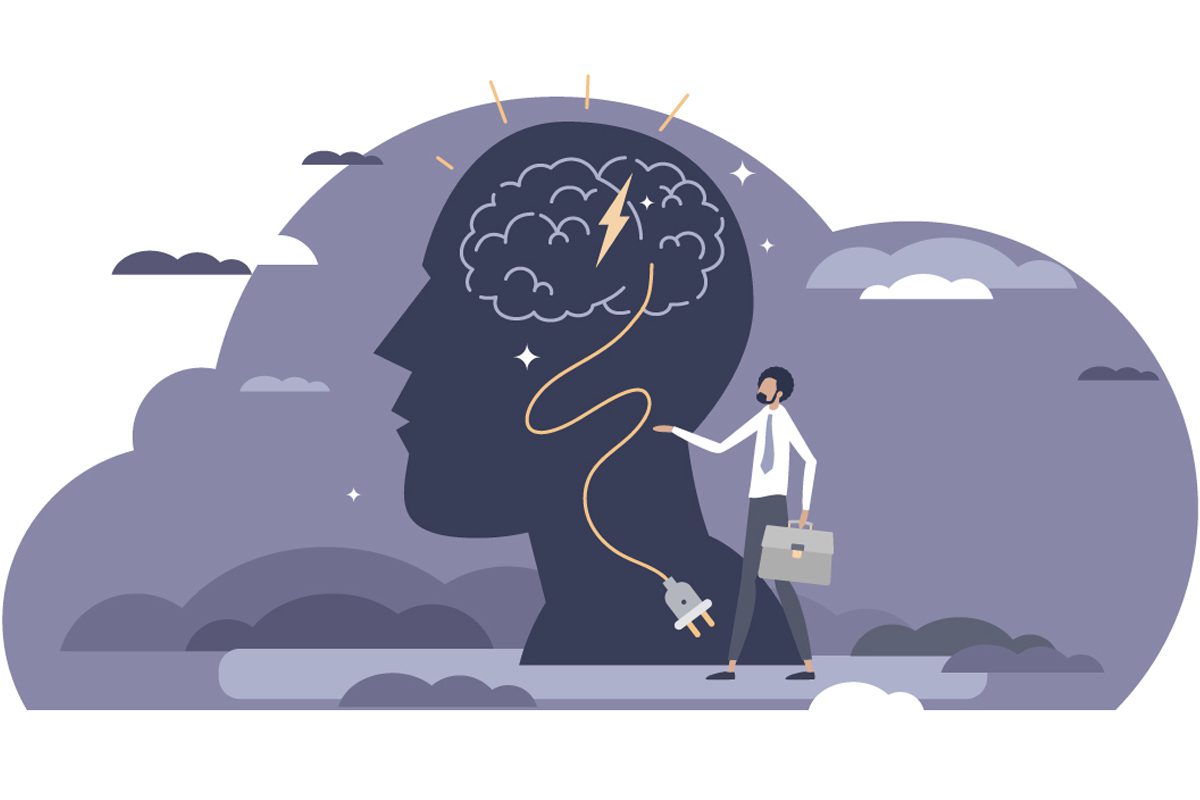This work may not be copied, distributed, displayed, published, reproduced, transmitted, modified, posted, sold, licensed, or used for commercial purposes. By downloading this file, you are agreeing to the publisher’s Terms & Conditions.
aDivision of Schizophrenia and Related Disorders, Department of Psychiatry and Behavioral Sciences, The University of Texas Health Science Center at San Antonio, San Antonio, Texas
bUniversity of California San Diego and VA San Diego Healthcare System, San Diego, California
J Clin Psychiatry 2023;84(1):MS21078COM6
To cite: Velligan DI, Rao S. Defining and achieving treatment recovery in schizophrenia. J Clin Psychiatry. 2023;84(1):MS21078COM6.
To share: https://doi.org/10.4088/JCP.MS21078COM6
© 2023 Physicians Postgraduate Press, Inc.
This Commentary section of The Journal of Clinical Psychiatry presents highlights of the teleconference series “Revisiting the Relapse and Remission Roller Coaster: Safety and Efficacy of Novel Schizophrenia Treatments,” which was held on September 13, 2022. This report was prepared and independently developed by the CME Institute of Physicians Postgraduate Press, Inc., and was supported by an educational grant from Alkermes, Inc. and Sunovion Pharmaceuticals, Inc.
Continued advances in pharmacotherapies and psychosocial interventions have transformed expectations for patient outcomes in schizophrenia.1 Within the last decade, clinician goals have shifted away from symptom containment with treatment and toward remission and functional recovery.2 This evolution, in part, reflects clinicians’ increasing appreciation for how patients define convalescence and the reality that many can achieve a substantial degree of recovery using this more ambitious framework.1,3 That said, a widely accepted, validated definition of recovery remains elusive and a continued obstacle for neuropsychiatric clinicians and researchers alike.
Indeed, it is easier to detect the absence of psychosis than to gauge levels of unimpaired, everyday functioning. Determining a basis for comparison is logistically challenging, as there are no clear standards used to define accomplishment in certain functional domains, such as independent living and social contact. Furthermore, psychosocial and functional parameters can vary substantially between communities and across cultures, which hinders the application of instruments developed to measure recovery in a specific, social context. Similarly, quantifying cognitive performance is difficult, as varying opinions exist regarding what constitutes normal performance for people with schizophrenia; cognitive impairment can precede the development of psychosis and may influence conceptions of what constitutes average functioning.4
The heterogeneity seen in defining clinical outcomes affects the formation of practice guidelines and may account for the variation observed in studies assessing recovery.5 The estimated proportion of people with schizophrenia achieving recovery varies between 13.5% and 50%.6 Left unaddressed, these inconsistencies make it impossible to comprehensively compare results among studies.5
To date, a greater consensus has emerged regarding the definition of clinical remission in schizophrenia. The Remission in Schizophrenia Working Group (RSWG), populated with luminaries in the psychiatric field, released a consensus statement on how to measure symptomatic recovery in 2005 that has enjoyed widespread adoption since its publication.7 According to the RSWG, clinical remission is characterized by no psychotic symptom scale scores greater than 3 (mild) on the Brief Psychiatric Rating Scale over 6 months and signs of symptomatic recovery, such as treatment adherence, employment, and the absence of side effects attributable to treatment. To the working group, this definition of clinical remission is necessary but not sufficient for eventual recovery from schizophrenia.7
Improvement in patient self-perception is an additional aspect that warrants clinician consideration when evaluating the extent of recovery. Patients with schizophrenia exhibit diminished self-affection—an exaggerated decline of the experiential self—and hyperreflexity—an increased perception of own’s perceptions, thoughts, and feelings. Through a phenomenological approach, clinicians can gain insight into the inner world of patients and better comprehend their treatment needs.8,9
Forging positive relationships with patients with schizophrenia is also particularly essential for the implementation of shared decision making (SDM). Patients with schizophrenia routinely underestimate their competency to make decisions, which may lead them to have little to no interest in taking a leading role in their own care.10 Seeing this reluctance, attending clinicians may naturally gravitate toward a paternalistic, authoritative approach to care. Healthcare providers may also understandably prefer a more unilateral model of disease management to mitigate the risk of harm and avoid unnecessary liability and legal exposure.11 From a resources perspective, SDM may simply be infeasible in systems with limited trained personnel who have high patient loads.12
Despite these barriers to implementation, substantial evidence supports the use of SDM in mental health conditions. In a systematic review13 of factors influencing adherence to antipsychotic medications, researchers found that positive attitudes toward medication and insight into the underlying illness correlated with better adherence and outcomes in schizophrenia. SDM, which by definition has clinicians providing patients medical information about treatment options, may therefore be useful in long-term schizophrenia management.13 The effect size of SDM appears modest but consistent across studies and warrants continued investigation, especially as such communication can critically foster adoption of underutilized treatment modalities, namely long-acting injectable antipsychotics.14 Some psychiatrists assume that patients prefer oral medications to long-acting injectables and may consequently avoid proposing the latter altogether.15 That said, when clinicians have adequate training on how to appropriately use these medications, patients tend to have higher receptivity to these alternatives. In one study, researchers noted that some patients prefer long-acting injectables as they valued the convenience that comes from not having to take pills every day.16 These variations in preferences deserve consideration when crafting management plans in conjunction with patients. By more closely aligning treatments to the individual interests of patients, psychiatrists and other ancillary clinicians can elevate the likelihood of continued patient compliance to medication, improve satisfaction with care, and ultimately facilitate more complete recoveries in those with schizophrenia.

 Patient PERSPECTIVE
Patient PERSPECTIVE
“I feel I’ve had very little say in the decisions. It’s like, deep inside me there’s a whole lot of frustration. I read something about shared decision making, then I thought, Oh my God, shared decisions, I haven’t seen much of that.”17
Published online: January 18, 2023.
Relevant financial relationships: Dr Velligan has served as a consultant for Merck, Alkermes, Otsuka, and Janssen; received grant/research support from Biogen; received honoraria from Janssen and Otsuka; and served on the advisory boards for Merck, Janssen, Otsuka, and Alkermes. Dr Rao has served as a consultant for Janssen and Alkermes and received honoraria from Janssen, Alkermes, Otsuka, and Neurocrine.
Funding/support: Financial support for preparation and dissemination of this commentary was provided by Alkermes, Inc. and Sunovion Pharmaceuticals, Inc.
Disclaimer: This evidence-based peer-reviewed commentary was prepared by the CME Institute. The opinions expressed herein are those of the faculty and do not necessarily reflect the views of the CME Institute, the publisher, or the commercial supporters. This article is distributed by Alkermes, Inc. and Sunovion Pharmaceuticals, Inc., for educational purposes only.


Schizophrenia affects 1% of the world’s population largely during a patient’s most productive years. Multiple treatments are available, however many gaps to recovery exist. Learn from experts diagnostic criteria for and defining recovery in schizophrenia.


Negative symptoms contribute to poor functional outcomes in schizophrenia. Evaluating different symptom domains and understanding the disorder’s reward circuitry can help with intervention and patients’ leading more fulfilling lives.


Side effects from medication have the greatest impact on adherence for patients with Schizophrenia. They lower quality of life, daily functioning, and satisfaction.


Balancing symptoms and side effects is difficult when treating patients with schizophrenia. New approaches to treatment and new therapies in the pipeline offer hope for this difficult-to-treat mental health disorder.
留言 (0)